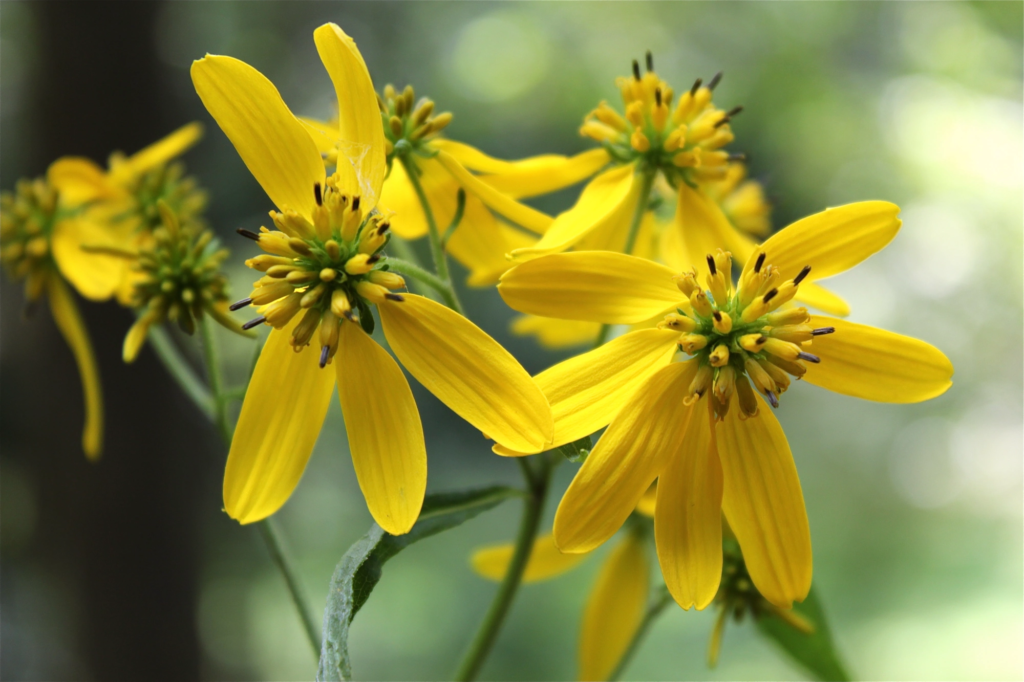
Description #

Wingstem is a deciduous wildflower native to North America. Its native habitat is fertile areas of moist wooded slopes and open woodlands, riverbanks, shaded lowlands, roadsides and fields. It grows up to 8 feet tall in full sun to partial shade and is considered an important plant for bees but can spread aggressively.
Use this plant in naturalized areas, native plantings, woodland edge or along ponds and streams.
Like so many other plants that bloom in late summer and fall, Wingstem is a member of the prolific Aster (Asteraceae) family, which consists of more than 23,600 species.
Flowers #

The flowers of this aster grow in loose clusters at the top of the plant. They look like small, bright-yellow sunflowers, but the petals (ray flowers) vary in number and always droop downward in a haphazard fashion. The erect disk flowers protrude upward from the center of the flower.
Wingstem is a species that has sterile ray flowers and fertile disk flowers, all attached to a rounded receptacle. The disk flowers are large and distinct; it’s easy to see each individual flower, especially when insects are foraging for food.
Like its relatives, Wingstem is a great source of food for late season pollinators. The ray flowers open first as a signal to pollinators that the flower head is open for business. The disk flowers bloom a few at a time, starting with those closest to the ray flowers, then over many days gradually working towards the center of the head. In each disk flower, the male reproductive parts (stamens) mature first, opening their anthers to make pollen available. Later the female reproductive parts (pistils) replace the stamens, the stigmas at the tips of the pistils becoming receptive to pollen. At any time while in bloom there may be some flowers in a head that are in the male phase, others in the female phase.
If insects assist in transporting pollen to help achieve successful pollination, the disk flowers will produce dry, winged fruits (achenes) that will take the place of the flowers on the globe-shaped receptacle. The fruits may drop in place, be scattered by wind, or dispersed with the assistance of a passing animal hooked by the pointy bristles on each achene.

Leaves #

Wingstem leaves are alternate, lanceolate and very coarse to the touch (like sandpaper). The leaves at the top of the plant tend to be smaller, with smoother margins, whereas the lower leaves can grow quite large (8 inches) and have toothed margins.
Stem #

The common name of this plant, of course, comes from the distinctive stem, which has vertical ridges that are sometimes described as “wings”. The stem is usually unbranched, and the fast-growing plant can eventually reach great heights– up to 8 or 10 feet.
Known Medicinal Properties #
Several traditional medicinal uses of Frostweed, or Wingstem, have been documented among Native Americans. Depending on the culture, the plant has been used as a gastrointestinal aid, a urinary aid, a laxative, an eye medicine, externally against joint pain, as an emetic (vomit inducing), and for ceremonial uses.



